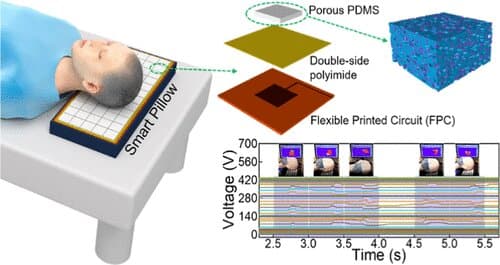Close overnight monitoring in a medical laboratory can offer a clear picture of sleep quality, and while wrist-worn tracking devices are a more viable solution for everyday folk, these don’t offer near the same level of accuracy. Scientists in China have developed a smart pillow designed to walk the line between these two sleep-tracking solutions, monitoring the quality of rest through head movements, which work to power the system at the same time.
The self-powering smart pillow stems from earlier work by scientists in sleep-monitoring systems that track movement and harvest energy during the night through triboelectric nanogenerators (TENGs). These systems, which convert friction and mechanical energy into electricity, are at the cutting edge of wearables research due to their ability to harness the energy of the moving body.
In the realm of sleep monitoring, these generators have found their way into eye masks and bed sheets. The creators of the new smart pillow, however, were seeking a less restrictive solution, and one that wouldn’t compromise the comfort of the user. The pillow features sets of flexible, porous polymer triboelectric layers that generate an electrical current as the head moves. These were placed atop an ordinary pillow and generate a voltage in response to the amount of pressure applied.

ACS Applied Materials & Interfaces (2022). DOI: 10.1021/acsami.2c03056
Testing showed the pillow could track the pressure distribution of a fake human head as it shifted positions, and it proved sensitive enough to track a finger’s movement as it traced out letters. While designed to track sleep quality, the scientist imagine the self-powered pillow could find other uses including monitoring patients with neck conditions or acting as an early warning system for people prone to falling out of bed.
The research was published in the journal ACS Applied Materials & Interfaces.
Source: American Chemical Society
Source of Article